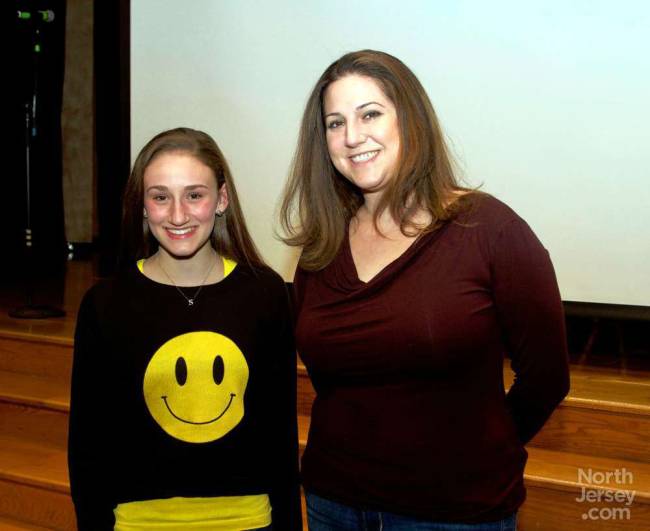The Record, December 12, 2013
In an age when DARE isn’t always enough to keep kids off drugs, it’s can be a challenge for communities to keep children aware of the consequences and not fall into the trap of lecturing.
At Upper Saddle River’s Cavallini Middle School, one eighth-grader is using teen culture and real life experiences to reach her age group in an effort to prevent unnecessary deaths due to drug use, specifically heroin.
When resident Stephanie Reifman heard of the most recent heroin overdoses — some were celebrities, others from neighboring towns — she wanted to do something about it.
“The deaths seemed avoidable,” Reifman said, adding that one in particular, Cory Monteith of “Glee” was very sad. “I love ‘Glee’ and I wanted to bring awareness of the issue.”
With her Girl Scout Silver Award project coming up, she decided to fulfill its requirements and help the community with the creation of a H.A.P.P.Y. Week, standing for Heroin Addiction Prevents People’s Years, focusing on how heroin can lead to death.
The program took place the last two weeks of November, ending with an evening event in the middle school, in which there was a video about heroin statistics, a trivia game about “Glee” and Reifman interviewed a 23-year-old recovering heroin addict about her struggles. Students in grades 7 and older were invited, along with their parents.
She worked with her principal and the Upper Saddle River Youth Guidance Council, in addition to the county Department of Health Services, who helped Reifman find a recovering heroin addict willing to tell her story.
“Our school community is fortunate to have students like Stephanie and organizations like the Upper Saddle River Youth Guidance Council, which sponsored the event,” Cavallini Principal James McCusker said. “All those who attended, both students and adults, were enlightened. We were also infinitely impressed with Stephanie’s dedication, maturity and poise.”
The 13-year-old said it was several months in the making and she started out giving smiley faced items during the week as symbols of making good choices that lead to happy lives and reminders of the importance of this issue.
Reifman said she wanted to come up with a project that meant something to her and would make a difference in her Upper Saddle River community. She’s hoping to do something every year to increase the awareness.
She said while the eighth-graders have learned in health class about addiction and drugs, like heroin, it’s something she expects might be more of an issue in high school, when people are more likely to experiment and experience social pressure.
“So this presentation was geared toward eighth graders so hopefully they won’t try it,” Reifman said. “I think it’s important for eighth graders to have exposure of the effects of heroin.”
Her mother, Robyn, said Stephanie took on a tough topic with maturity and the family is very proud of her.
“Kids hear about this but it’s different when they learn of it from an authority figure as opposed to someone their age, so I think that’s what made this presentation different,” she said.
Robyn said the presence and prevalence of heroin being available to kids in middle school is frightening and said it was eye opening for her and Stephanie.
She said, using the Cory Monteith example, sometimes it’s hard for kids to see someone like him die because they get caught up in the character. He played a very straight-laced football player, but when Stephanie could reconcile that he had some real issues, “I think it’s a little easier,” Robyn said.
The eighth-grader said the feedback she received from her classmates seemed to indicate it sent the right message. She said she passed out a survey and the results weren’t what she was expecting.
“What was surprising is that before the presentation both boys and girls said they didn’t think [heroin addiction] was a serious problem, but after the presentation, they did,” she said.
Reifman said the speaker was a very important focus of the presentation, for students to hear about the addiction from someone who lived through it, lost people she loved and continues to struggle as she tries to maintain a clean lifestyle.
The fact that the speaker didn’t “fit” the description society usually equates with addicts, sent the message home that it can happen to anyone.
“She seemed like anyone could know her,” Reifman said.
Read the full article in The Record
